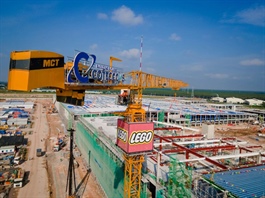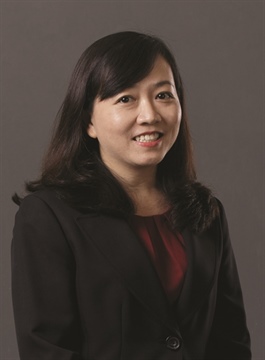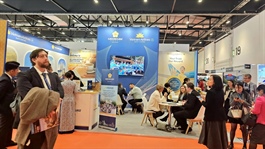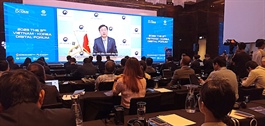Semiconductor goals building up steam
Semiconductor goals building up steam
Vietnam is becoming a crucial link in the global semiconductor supply chains thanks to its comparative advantages and ongoing plans for human resource development.
![]()
At last week’s Vietnam Semiconductor Summit, a conference in the launch week of the National Innovation Centre (NIC) in Hanoi’s Hoa Lac High-Tech Park, experts declared Vietnam has all the necessary conditions to develop the semiconductor industry.
John Neuffer, president and CEO of the US Semiconductor Industry Association (SIA), said, “The technologies of tomorrow all depend on semiconductor innovation, including AI, quantum computing, autonomous driving, and 5G and 6G. Vietnam is a crucial link in the global semiconductor supply chain, and it’s poised to become even more important to our industry.”
He was also impressed that Vietnam is developing its own national semiconductor strategy. “I would encourage you to play to your strengths to pull in greater semiconductor investments, for starters by doubling down to draw in more back-end assembly tests,” he explained. “This also means looking to bolster your participation. Everyone wants a brand spanking new $20 billion semiconductor lab in their yard, and that’s a great aspirational goal. But Vietnam has shown itself to have a proven track record in important parts of our supply chain.”
Numerous semiconductor projects have chosen Vietnam as a destination recently. Amkor Technology and Hana Micron have respectively put large-scale semiconductor factories into operation in October and September. Victory Gain Technology Group from China plans to invest in a $400 million project in the northern province of Bac Ninh, and Thai-based Runergy PV Technology has also raised its investment to $440 million in the central province of Nghe An.
Additionally, Marvell has announced the establishment of an integrated circuit (IC) design centre in Ho Chi Minh City. Samsung will produce semiconductor components at its Samsung Electro-Mechanics factory in the northern province of Thai Nguyen. Synopsys, NXP Semiconductors, and Hanmi Semiconductor also have investment and business activities in Vietnam.
The opportunity has become even greater since Vietnam and the US upgraded their relationship and reached cooperation agreements on innovation, including in the semiconductor industry.
During the September trip to the US, PM Pham Minh Chinh met with a series of large corporations in semiconductors, such as Nvidia, Synopsys, which have already made investments and business activities in Vietnam. Synopsys Vietnam alone has opened four offices in Ho Chi Minh City and the central city of Danang with nearly 500 engineers. The PM asked them to open factories setting Vietnam as a manufacturing hub in Southeast Asia, and support the development of the industry in Vietnam.
However, Neuffer of the SIA also raised the challenge of talent shortage across the globe. “Vietnam’s plan to produce 50,000 more chip engineers is absolutely the right objective. And I encourage that be achieved as soon as possible. Competing on talent is a very smart move,” Neuffer said
Seeing the challenge of human resources, the government has assigned the Ministry of Planning and Investment (MPI), the Ministry of Information and Communications, and others to build an action programme to develop this industry.
The MPI has proposed three main pillars to train human resources. The first is university training for high-quality human resources, including engineers, those with PhDs and Masters, the second pillar is training technicians, and the third is to draw in talent from elsewhere.
This will be carried out with the support of Synopsys, a Californian semiconductor design software and security group, providing training licences that include curriculum, educational resources, and other initiatives to the NIC to help set up its chip design incubation centre. Electronic systems design group Cadence will offer access to its tools to academic institutes selected by the NIC, providing students with an opportunity to gain real-world experience creating IC designs.
And Arizona State University will introduce job opportunities for Vietnamese engineers trained at the NIC IC design centre for training and incubation with domestic and foreign businesses in the semiconductor industry, including linkages to Arizona’s large global semiconductor ecosystem.
Minister of Planning and Investment Nguyen Chi Dung believes Vietnam has enough capacity to develop the semiconductor industry, and sees an abundant workforce in engineering and technology related to the industry, and numerous reputable universities and institutes.
“Numerous local large enterprises are willing to cooperate and develop the semiconductor industry, such as Viettel, VNPT, FPT, and CMC,” he said. “Vietnam is committed to making a significant contribution to the innovation ecosystem of the world’s semiconductor industry. In the near future, we believe Vietnam will become a reliable partner and a key link in the global semiconductor manufacturing supply chain.”

























